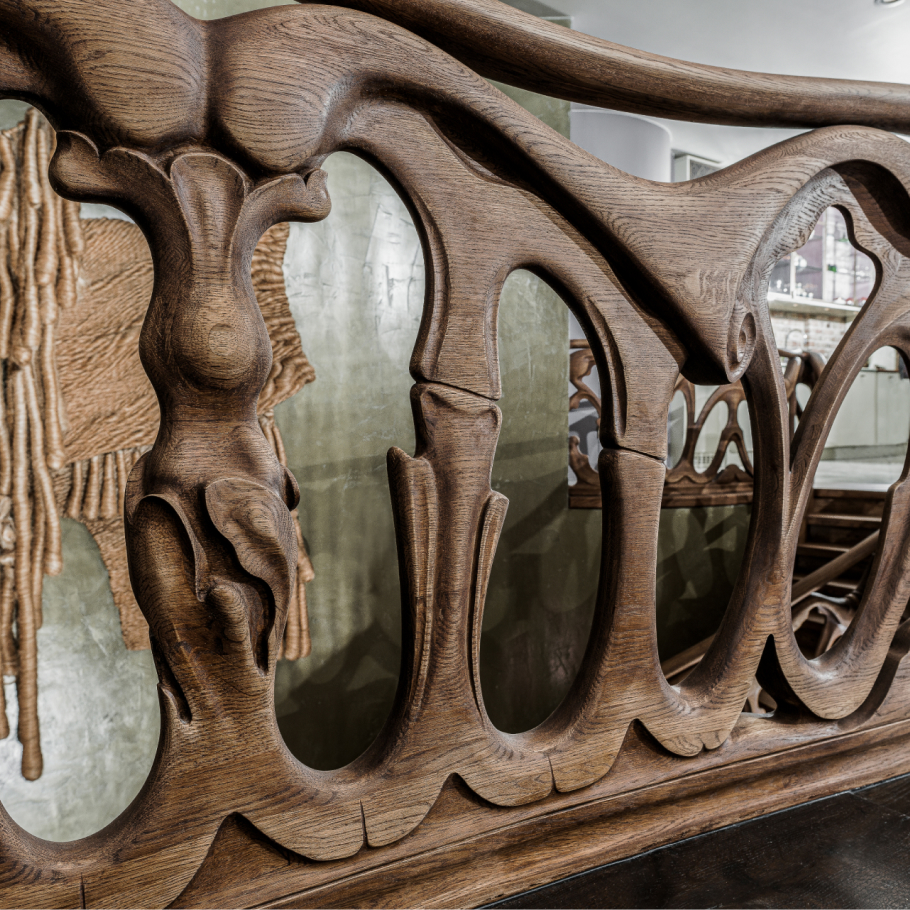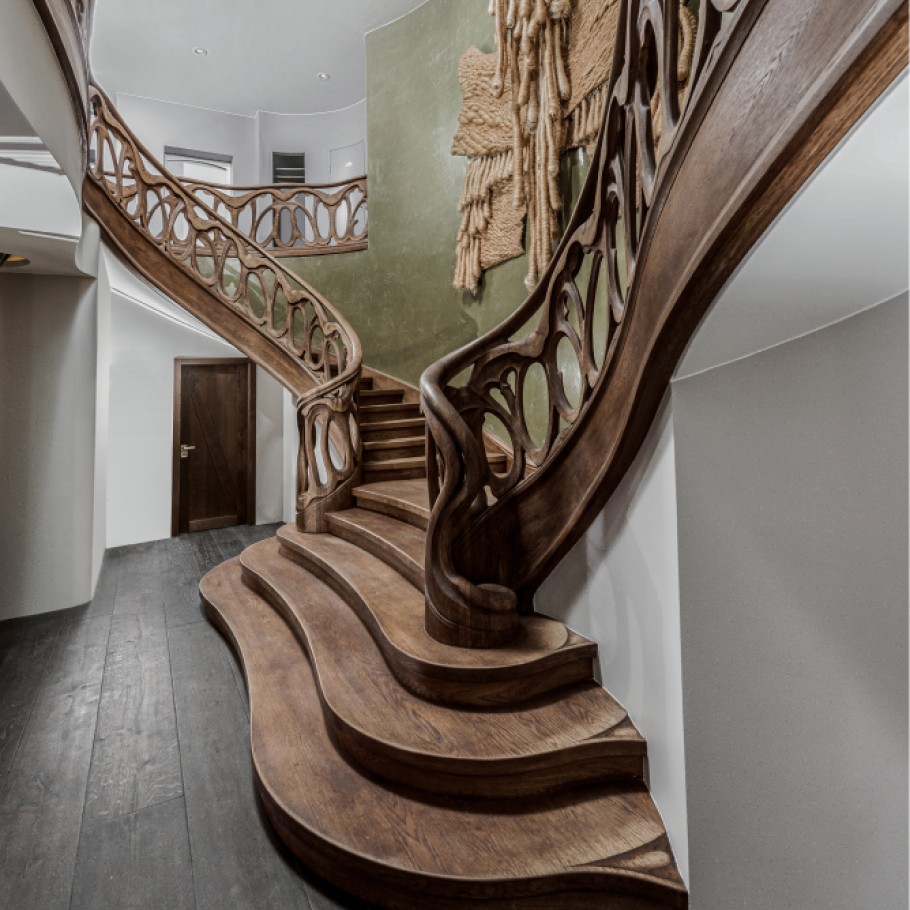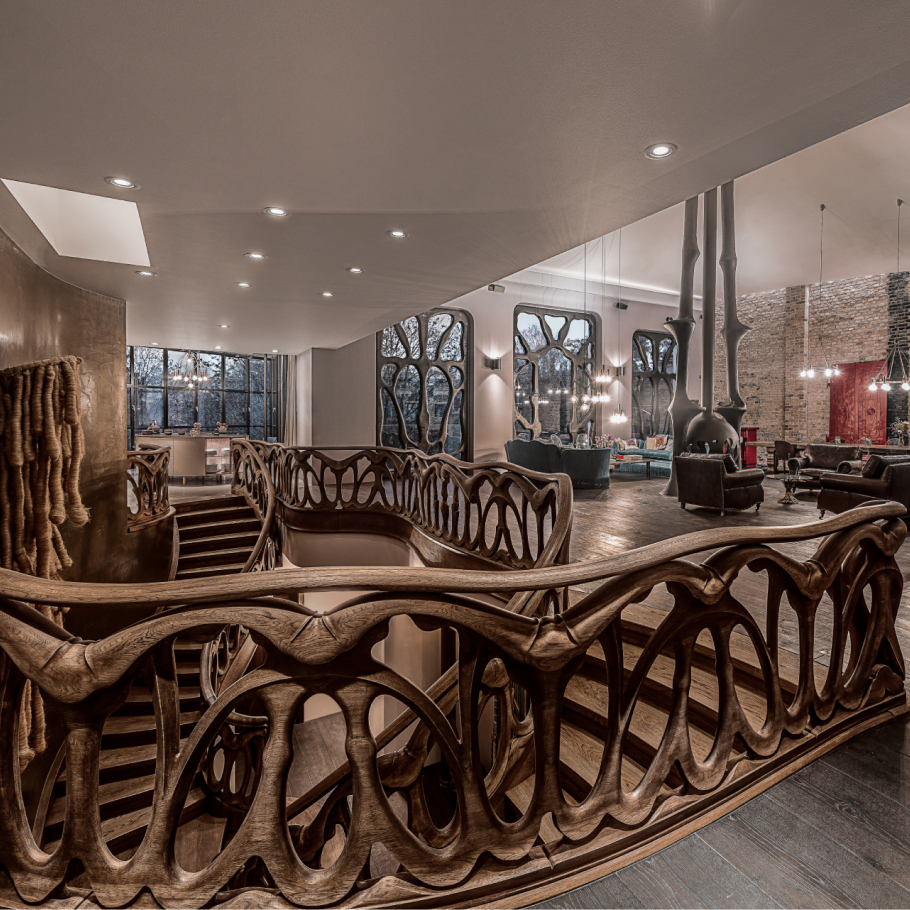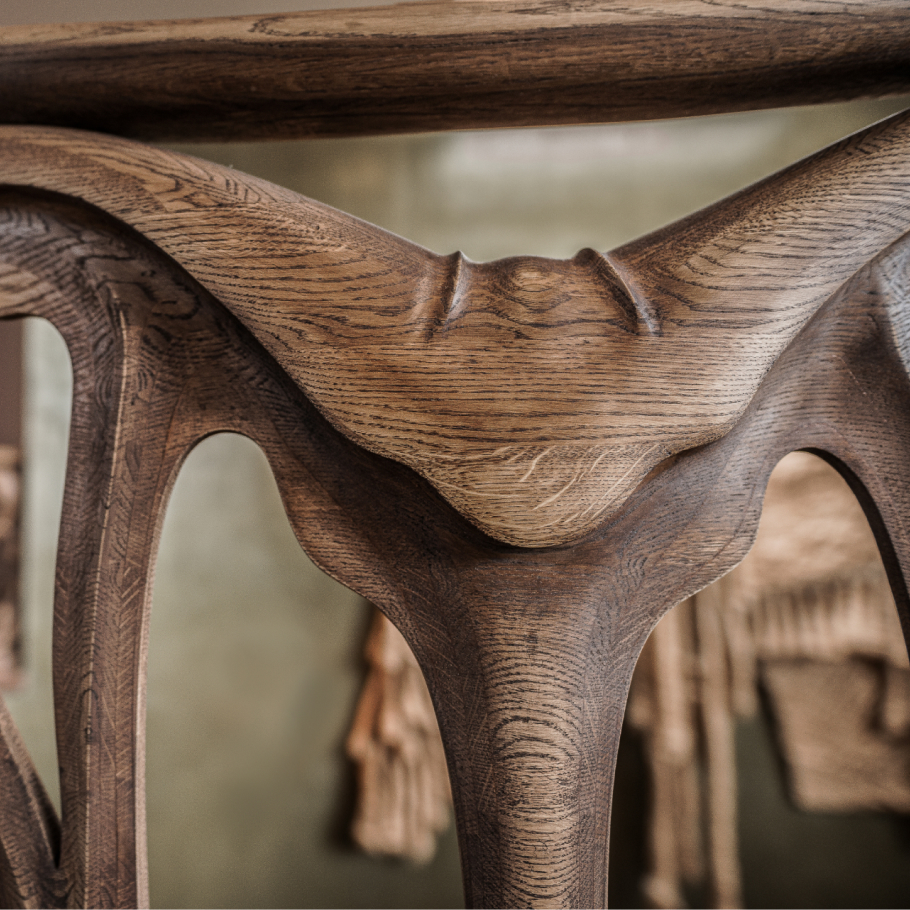ART NOUVEAU STAIRCASES BY MARKIEWICZ
The Art Nouveau era flourished at the turn of the 19th to the 20th century, leaving a lasting impression on both art and architecture. This artistic movement thrived from 1880 to 1914, showcasing its lush beauty and imaginative forms. Internationally, Art Nouveau reflects the dynamic and avant-garde spirit of the time. Even today, antiques and decorative items created during this period enjoy great popularity, including stair railings enriched with Art Nouveau-inspired ornaments.
Many of our staircases, lovingly and artistically adorned with hand-carved or hand-forged railings and ornamental details, delight their owners daily in cities such as Berlin, Stuttgart, Warsaw, and Pune (India). Our company takes great pride in reflecting on the numerous successful Art Nouveau projects we’ve completed, embodying the elegance and timeless style of this era with artisanal perfection. However, we don’t dwell solely on the past. Instead, we look forward with curiosity and excitement to upcoming projects and new challenges in staircase design. The markiewicz team approaches each new project with passion and artistic dedication.
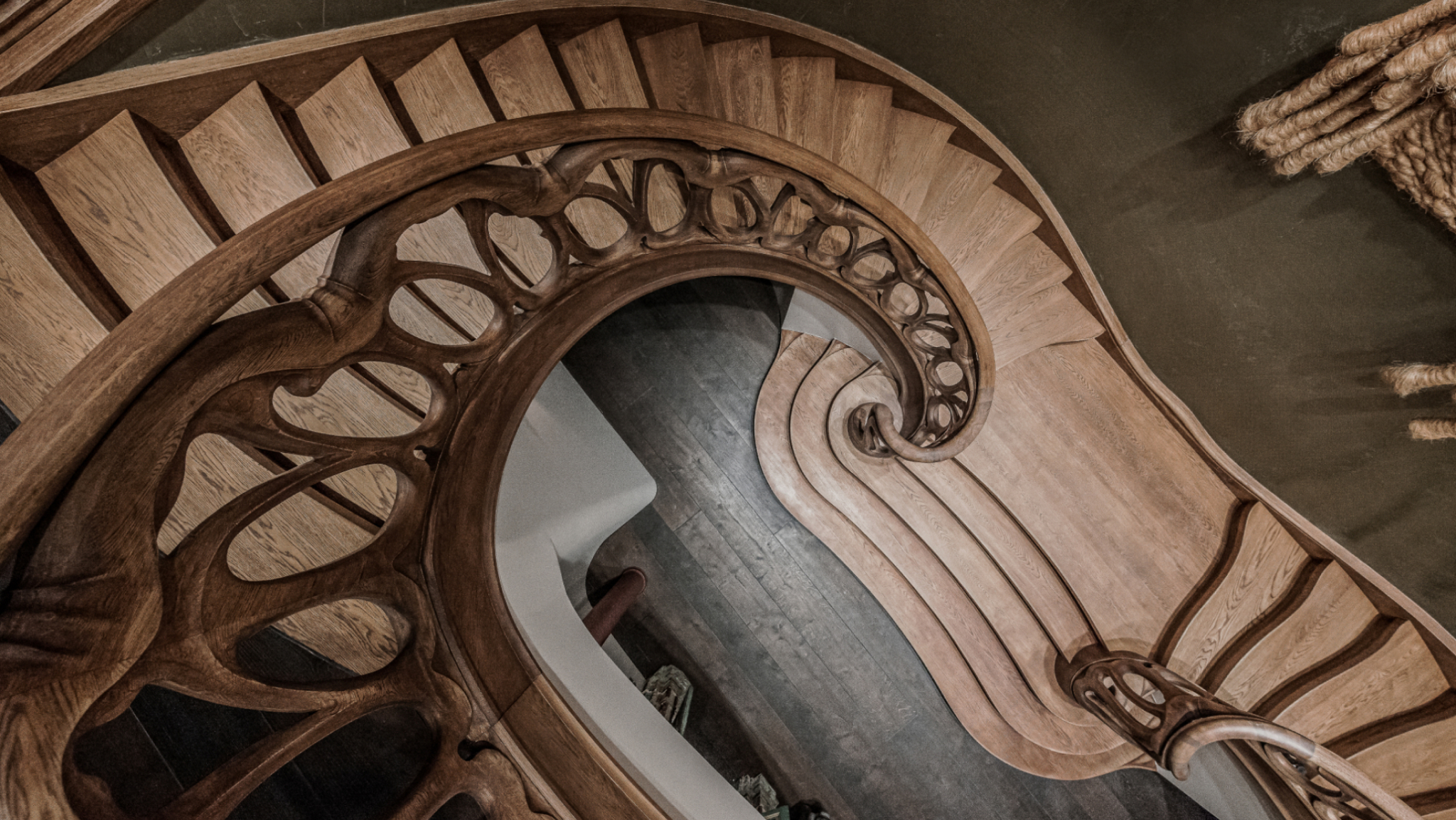
ART NOUVEAU – A Brief Guide to Materials
During the Art Nouveau period, architecture was primarily shaped by the use of wood, steel, and glass. The popularity of these materials was closely linked to the rapid industrialization in Europe and the development of technological innovations. This, in turn, opened up new and almost limitless artistic possibilities in staircase design. Nevertheless, sandstone and wood remained essential elements in staircase design, valued for their durability and versatility in intricate carvings.
The ability to shape and process materials creatively was crucial for the elaborate decorations crafted by the masters of the time. To this day, the carved, flowing, or organic forms of many staircases, as well as the floral and forged ornaments of various stair railings, reflect the timeless beauty of this impressive staircase art.

PROF. JEAN-REMY VON MATT
Co-founder of the advertising agency Jung von Matt - Hamburg - 2015
"From our very first meeting, your ideas and sketches left us thoroughly impressed. That excitement carried effortlessly through every step of the project—staying true to the metaphor of a staircase—right up to its final completion. Today, we are proud owners of perhaps the most extraordinary staircase in Berlin, and every time we walk up and down, we think of our trustworthy collaboration."
More Customer TestimonialsART NOUVEAU STAIRCASES FOR A ROYAL ENTRANCE
In 2015, this unique string staircase was completed in the Berlin penthouse of Jean-Remy von Matt, co-founder of the internationally renowned advertising agency "Jung von Matt," and his wife Natalie von Matt. The creativity of the couple and the craftsmanship realized by us are vividly reflected in the asymmetry of the staircase and the three-dimensional detailing of the railing. With its organic and naturalistic design, the staircase evokes associations with the distinctive architectural style of Catalan architect Antoni Gaudí.
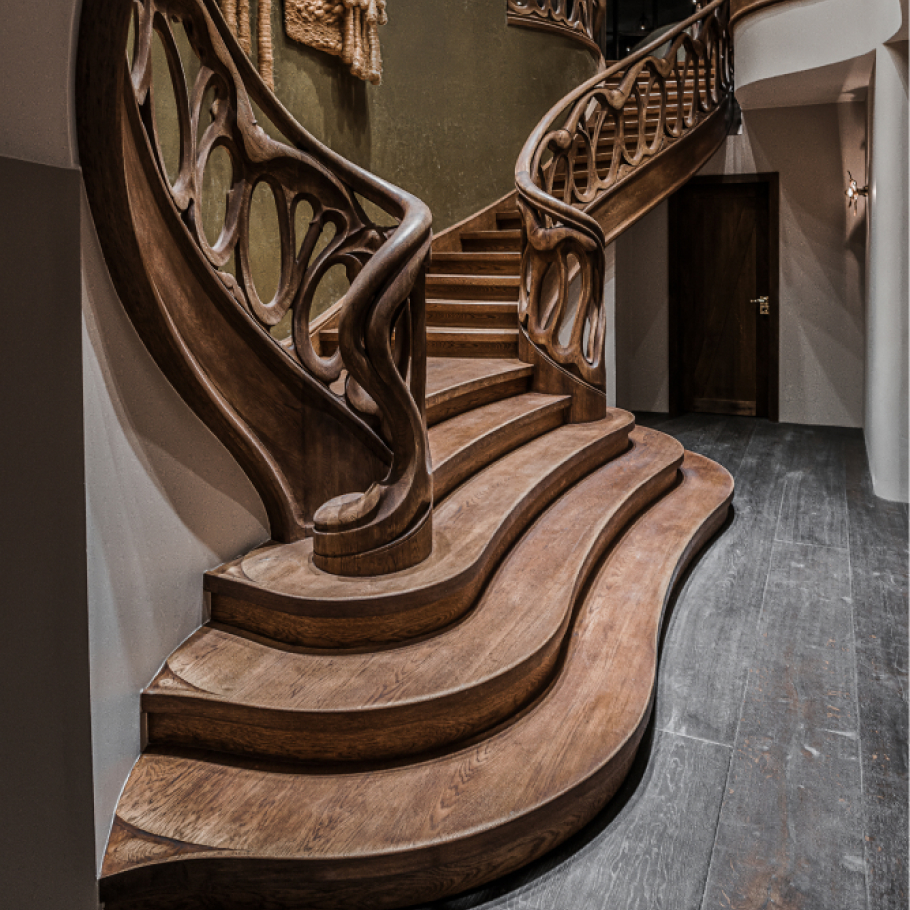
THE ARTISTS OF ART NOUVEAU ERA AND THEIR PHILOSOPHY
In the Art Nouveau movement, architects adopted a holistic approach, viewing a building as a cohesive architectural unit. Their core belief was that the façade of a building should reveal how its interior was divided and artistically decorated. Facades were no longer dictated by symmetry and axial divisions but followed a spatial concept derived from the floor plan.
However, there were significant differences among the historically important architects who shaped the Art Nouveau movement. For example, Antoni Gaudí’s designs were highly playful, while Austrian designer and architect Joseph Maria Olbrich leaned towards a simpler architectural style. At markiewicz, we often draw inspiration from the incomparable art of Belgian Art Nouveau master Victor Horta, whose (staircase) architecture can certainly be described as revolutionary. In general, Art Nouveau never left even the smallest ornament to chance. Absolute perfection in both planning and execution dominated the architects of this significant artistic and architectural era. This mindset is for us both an artistic guide and a commitment, forming the foundation of our artisanal philosophy.
